
Potential to help keep U.S. an innovation nation brings students coveted research fellowships
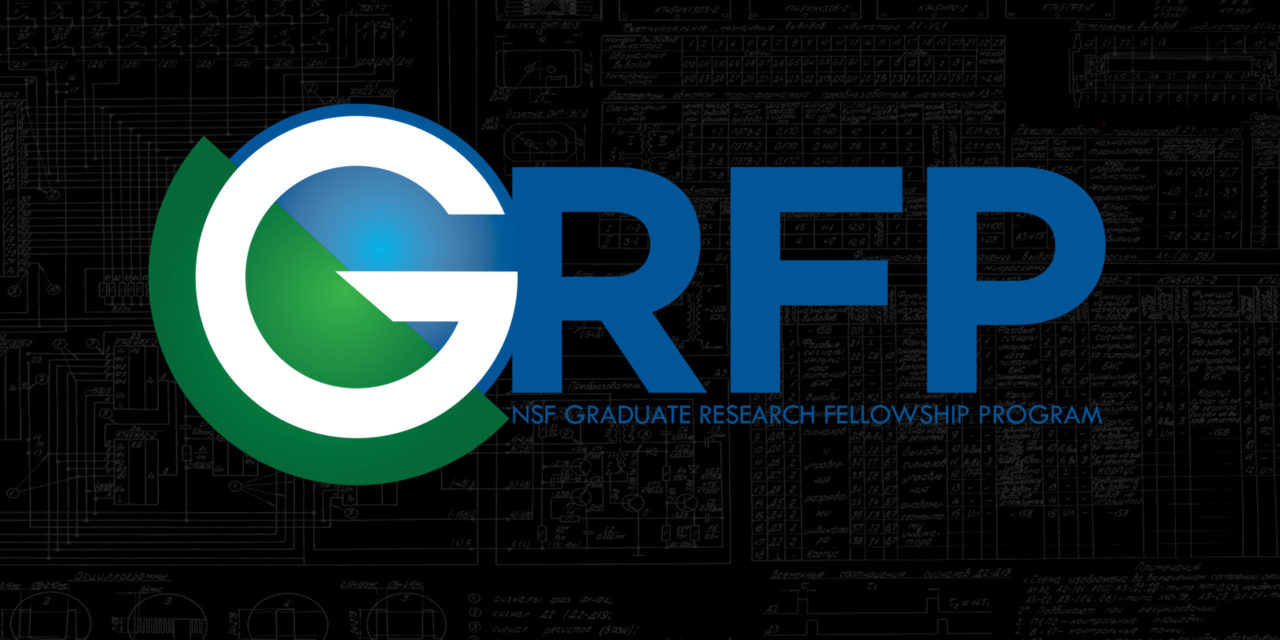
The National Science Foundation Graduate Research Fellowship Program awards support to outstanding students who are considered to be potential leaders in engineering, science, technology and mathematics.
The NSF sees recipients of these competitive, highly sought-after fellowships as future contributors to the kind of high-impact research, teaching and innovation necessary to maintain the nation’s technological strength, security and economic vitality.
Each Fellowship award covers three years of support during a five-year fellowship period. Currently, the NSF provides a stipend of $34,000 to the Fellow and a cost-of-education allowance of $12,000 to the graduate degree-granting institution for each Fellow who uses the support in a fellowship year.
Arizona State University’s Graduate College administers the award for the university’s Fellowship students and provides additional funding for tuition and fees, health insurance and a $750 allowance to further support students’ research.
Six of the 2017 Fellows are pursuing doctoral degrees in ASU’s Ira A. Fulton Schools of Engineering. They are among 19 current Fulton Schools graduate students who are NSF Graduate Research Fellowship awardees.
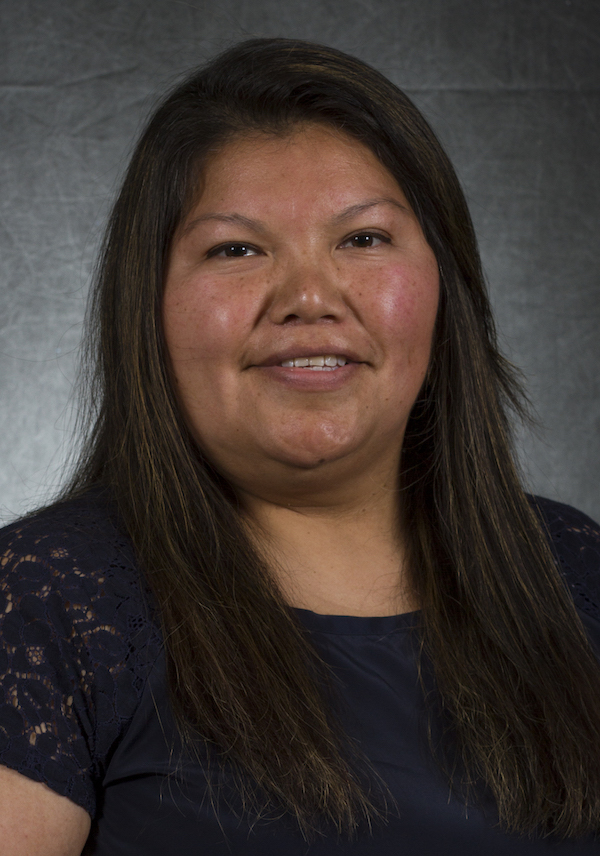
Ieshya Anderson
IESHYA ANDERSON
Her father was a mechanic who sometimes built tools and rudimentary machines to do his work on the family farm on the Navajo Nation.
One of her uncles was an engineer who often told her about his job working with lasers and rockets.
More than introducing her to technical problem-solving skills and the engineering profession, Ieshya Anderson recalls that her father and uncle put the idea in her head from a young age that she was going to get a good education.
In addition to elementary and junior high school studies, her father got her involved in outreach programs.
One of them was a summer school session at New Mexico State University that gave her and other Native American students some deeper exposure to mathematics and science.
“It was really fun,” Anderson says, “and I got to see a college environment and I really liked it.”
The program offered the students the results of some aptitude testing. Her scores showed particularly good skills in math and physics.
Several years later, her academic performance in high school earned her scholarships to attend ASUto study engineering.
But coming to ASU took her away from the Navajo Nation and the only place she had known.
“I was not prepared for that. Going to college gave me freedom that I wasn’t ready for,” she says. After a second semester, she was out.
For well over a decade afterward, Anderson worked a series of jobs — among them positions in customer service for a bank and a major delivery-service company. Eventually, she went to school to become a massage therapist and stayed in the field for about 10 years.
She was making a living for herself and her daughter, she says, “but I always felt a sense of failure because I was living for myself and not giving anything back.”
Besides her father and uncle encouraging her to get a college education, Anderson says one of her grandmothers was also a strong advocate for schooling.
“But she always said, ‘Don’t forget to come back. Get educated, but come back and help us, help your community,’” she says.
In 2013 she returned to ASU, enrolling in the Fulton Schools program in engineering with a concentration on electrical systems and some focus on renewable energy systems.
She earned a bachelor’s degree in 2016, but wasn’t finding a career path that she felt fit with her aspirations.
Fortunately, she had taken an opportunity to work with Associate Professor Shawn Jordan on a project to devise engineering education programs tailored for young Navajo students during her senior year.
Anderson helped to interview Navajo students and Navajo professional engineers as part of research to help structure effective learning environments and curricula to achieve the goals of Jordan’s project.
During two summers, she also helped Jordan run STEAM (science, technology, engineering, arts and math) camps on the Navajo Nation.
“We were giving many kids their first real exposure to engineering, and they were so interested,” she says. “I felt that I really was giving something back, that I was contributing and that I was personally connected to what we were doing.”
Jordan encouraged her to apply for a National Science Foundation Graduate Research Fellowship and pursue a degree in the Fulton Schools Engineering Education Systems and Design doctoral program.
After earning that degree, Anderson hopes to get opportunities to help tribal leaders expand and improve the educational experiences they can provide to their people.
That work will require the skills to design systems that resonate within a variety of distinctive tribal cultures, that help to keep kids in school, that show young students the relevance of engineering and science and education to their future and to empower their communities.
“That will be challenging,” she says. “There are a lot of things I have to get much better at to be able to do those things. But at this point in my life I am honed in on this goal, and I’m confident I can make a real impact.”

Jacob Clenney
JACOB CLENNEY
His father was an experienced “do-it-yourselfer,” Jacob Clenney says. So it was not a big problem when the family moved into a “fixer-upper” farmhouse in southern Arizona many years ago.
But the house did present one challenge for which his father lacked the requisite skill: replacing the home’s aging electrical system. The father turned to the son.
“He handed me a homeowners’ manual and said, ‘You need to do this,’” Clenney recalls. “I was about 13 at the time.”
When he had joined the U.S. Navy shortly after high school graduation, he was given the choice to perform his military service as a mechanic, a computer technician or an electrician.
In his eight years in the Navy he expanded his expertise far beyond the ability to rewire an old house.
His primary duty was as an electrician working on reactors for nuclear-powered submarines. He also taught others to be electricians.
“I really came to love electrical theory,” Clenney says, making his job “a wonderful mix of theoretical understanding and hands-on ability.”
The time in the Navy “did what it was supposed to do,” he says. “It gave me an idea of what I wanted to do with the rest of my life.”
He returned home and in 2014 began studies at ASU for a degree in electrical engineering.
With his training and experience, he was not the typical freshman. So in his first year, he joined Assistant Professor Mariana Bertoni’s lab, starting by building setups for experiments and later performing research, including a project under the competitive Fulton Undergraduate Research Initiative program.
Clenney did research and took classes year-round, enabling him to earn his bachelor’s degree in three years. He then finally took a summer vacation, touring across Italy, Scotland and Ireland. He returned this fall to begin doctoral studies, with Bertoni as his advisor.
His doctoral research will concentrate in the area of physical electronics and photonics — a newly adopted name for what has traditionally been called solid state engineering.
For now, he is involved in a Department of Energy project to develop a model for understanding how salt, originating in the glass, moves through the components of photovoltaic solar energy modules so that the effects can be controlled, mitigated or minimized.
That salt is a major cause of the degradation of solar modules that can shorten the lifespan and effectiveness of the technology, Clenney explains.
“It has not really been thoroughly studied how the salt is moving and causing degradation. I will be looking at the factors that affect the movement of sodium ions through the material,” he says.
The goal is to find ways to stop or at least hinder the decay of solar modules, possibly by “tailoring” glass components of modules for use with various kinds of sodium that would cause less damage.
“I’m still a fan of nuclear power, but I want to be part of getting solar to where it needs to be as one solution for our energy needs,” Clenney says.
He says a career in the energy field is the likely path for him, though he is open to other industries and to startup ventures.
“Although I love research,” he adds that he is by inclination a “puzzle lover” and would prefer to work mostly as a hands-on “engineering problem solver and troubleshooter.”
During what will be busy years in the doctoral program, he hopes to stay active in an array of interests: travel, metalworking, woodworking, mountain biking (while listening to heavy metal music), skiing and snowboarding (while tuned in to “mellow” music).
He does many of his own craftwork projects when he visits his family’s home.
“Dad has all the tools,” he says.
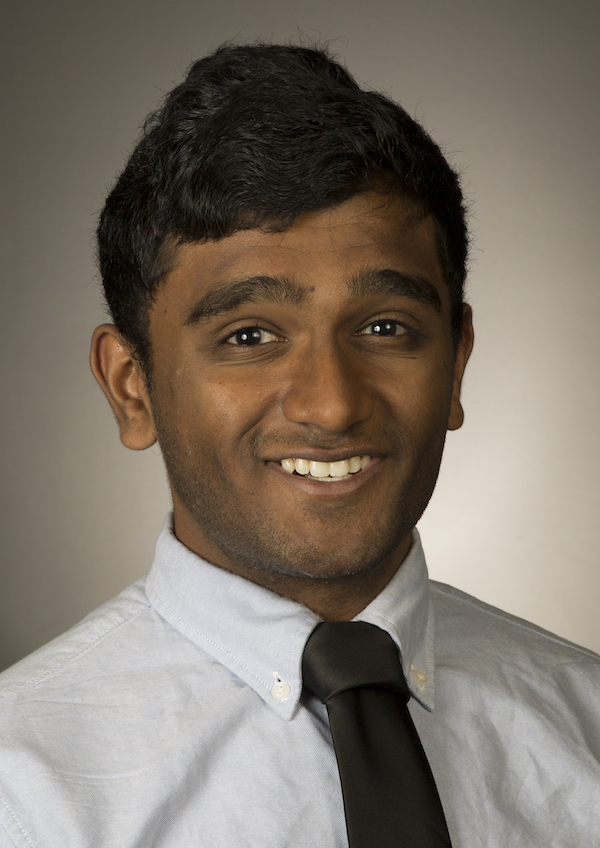
Nitish Peela
NITISH PEELA
Nitish Peela began his undergraduate years with the goal of becoming a physician, deciding to start on that path by majoring in engineering.
“I thought being an engineer would give me a technology-driven thought process and give me a leg up on other doctors, because technology is drastically changing the landscape of medicine,” he explains.
The decision to switch to biomedical engineering changed his career plans.
“I discovered that I am much more interested in developing cutting-edge technology that assists doctors and patients and contributes to improving the human condition,” he says.
So he shifted his focus from medicine to engineering, research and entrepreneurship.
And that decision eventually has led him to delay pursuit of a doctoral degree while launching a startup company — Vapometry Biolabs — for which he has already received funding.
During the next one to two years, Peela will develop his startup at an Arizona biotechnology incubator, the Center for Entrepreneurial Innovation. His startup focuses on creating a medical diagnostic device capable of rapidly diagnosing diseases in either a clinical setting or at home.
He has already assembled a small team of engineers to bring the products to the market and “created a platform technology that can be utilized to diagnose three different diseases,” he says.
Peela says he “wants to stay deeply connected to the academic community,” during his entrepreneurial efforts, so he is concurrently doing research in the lab of Mehdi Nikkhah, an assistant professor of biomedical engineering in the Fulton Schools.
In Nikkhah’s lab he will use hydrogels and nanomaterials to create injectable cardiac tissue patches that can help treat heart disease and also create diseased tissue that “mimics the way somebody’s heart looks after they had a heart attack,” he says.
The tissues will be used as a diagnostics tool to learn more about heart disease and has potential for use in personalized diagnostics.
When he does begin research to earn a doctoral degree in biomedical engineering he plans to continue work in tissue engineering.
Through tissue engineering Peela says he hopes to help fulfill “the promise that in our lifetime we will be able to create fully functional organs,” as well as help to continue the progress in brain-machine interface systems that he says is bringing us closer to making “mind-reading and cyborg-like technologies” a reality.
“Making any contribution to these fields would be immensely satisfying to me,” says Peela, who grew up in Chandler, Arizona.
In addition to research and entrepreneurship, he hopes to include teaching in his career. In fact, he says that in the long-term becoming a professor is “my highest priority.”
The interest in teaching was stoked by doing educational outreach with elementary school and middle school students while he was president of the student organization First Gen Scientists.
“I really enjoy creating hands-on activities, because you can see little kids getting excited while making simple objects like motorized planes or robots. They show an insane level of enthusiasm, which makes the whole experience super fun,” Peela says.
Beyond engineering research, business and teaching, he hopes to someday use his hobbies of graphic design and 3D modeling to make “creative short films” and animation features.
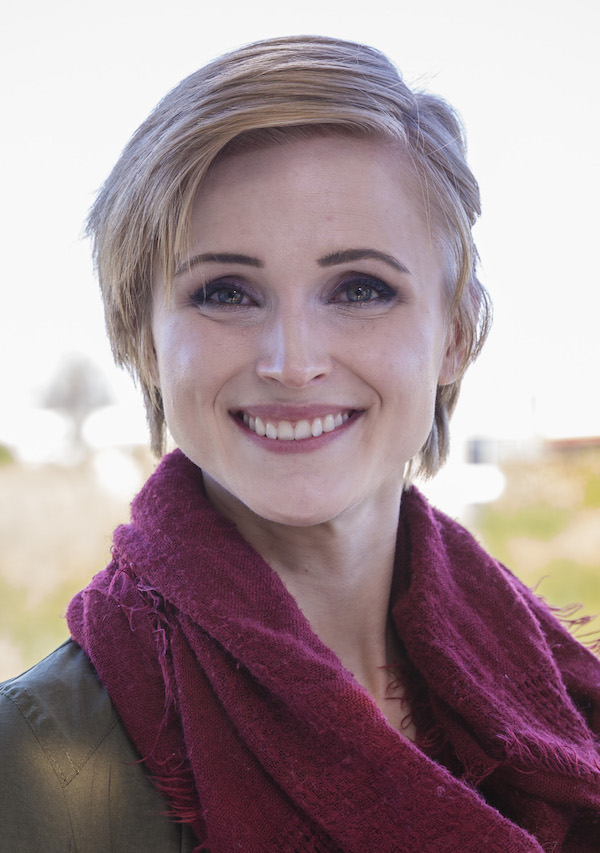
Carly Thalman
CARLY THALMAN
Carly Thalman says she gravitates toward pursuits that reflect both her “analytical and creative sides.”
That’s why she has leaned toward engineering with a focus on “soft” robotics — using pliant materials such as silicone and fabrics to make more comfortable prosthetics and other assistive and rehabilitative technologies.
Making them requires the application of science and math – and the use of some hardware. But they also can involve artistic aspects of technology design, the mimicry of nature’s processes and the delicate interfacing of the human body with electronic and mechanical devices.
Those disparate elements are particularly encompassed in the systems engineering research she’s doing to earn a doctoral degree.
“I like it because it involves a little bit of everything that you do in different kinds of engineering,” she explains. “You have to learn about all the parts of various systems and about integrating those parts. You need to figure out how to design systems that optimize that integration of multiple hard and soft components.”
Thalman will be taking on that challenge in the Bio-Inspired Mechatronics Lab directed by Assistant Professor Panagiotis Polygerinos, who guided her on the research she used as the basis of her honors thesis to earn an undergraduate degree from ASU’s Barrett, the Honors College in 2016.
For her primary doctoral research endeavor, she will work on an ankle rehabilitation device that uses soft actuators to provide people with impaired movement support and assistance for walking and standing.
The actuators will be integrated into a single, wearable ankle device. When inflated, the actuators become more rigid, enabling them to generate forces against the body to assist in basic motions.
By inflating and deflating at the correct time and in the correct location on the foot and ankle joint, she says, these actuators will help to ensure the user’s foot and ankle are in the correct position during walking, and will stiffen to provide support when the user is standing.
In another project, she will work with the Salt River Project utility company to develop an autonomous drone designed to assist in monitoring water quality in remote areas.
The idea is for the drone to be able to collect water samples with minimal disturbance of the environment and bring the samples to a lab for examination.
Thalman will design the grasping mechanism that enables the drone to collect water samples from beneath the surface of streams, rivers and lakes.
She’s continuing studies at ASU that began after transferring as a sophomore from the Central Arizona College branch in Apache Junction, Arizona, where she grew up.
Her academic performance there earned her the All-Academic Arizona scholarship and a Coca-Cola Scholar of Promise award through the Phi Theta Kappa Honors Society, which supported her undergraduate education at ASU.
Those years were capped off with Thalman winning the Fulton Schools Impact Award, given to graduating seniors who contributed to the schools’ mission through community service and student leadership.
She’s now hoping she can squeeze in time during her years of doctoral studies to keep up with interests in graphic design, drawing, writing fiction, photography, running, hiking and cooking — all things that combine various facets of the analytical with the creative impulse.
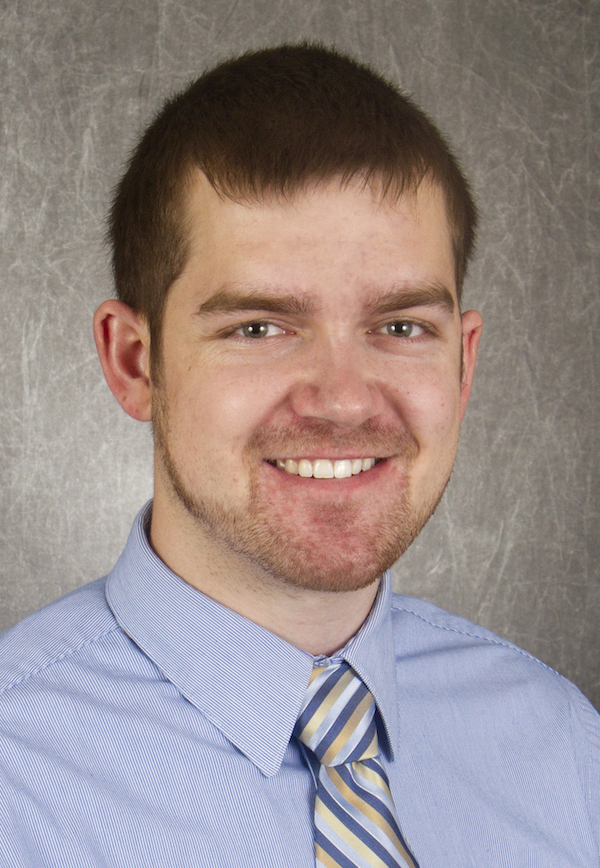
Kevin Tyler
KEVIN TYLER
When he began his freshman year at ASU, Kevin Tyler says he was already firmly intent on a career “working on big-picture things” with the potential to have far-reaching impacts.
What had attracted him to ASU was the Fulton Schools’ Grand Challenge Scholars Program, which is designed to produce graduates prepared to help take on what the National Academy of Engineering has defined as the critical technological and engineering challenges facing the world in the 21st century.
At first, he thought he might fulfill that mission by applying chemical engineering skills in the medical field. That changed when he unexpectedly “got lured into the solar stuff.”
The combination of physics, materials engineering and semiconductor technology involved in the solar energy field stoked his problem-solving proclivities.
Tyler changed course, opting into electrical engineering (the same field in which his father had earned a master’s degree at ASU) and eventually, through the Fulton Undergraduate Research Initiative, working in the labs of ASU’s Quantum Energy and Sustainable Solar Technologies, a National Science Foundation and Department of Energy Engineering Research Center.
His experiences there under the guidance of Fulton Schools Associate Research Professor Stuart Bowden provided him with the subject matter for his senior thesis as a student in ASU’s Barrett, the Honors College. He presented aspects of his QESST projects at two energy engineering conferences.
At QESST, Tyler also worked with Professor Richard King, who introduced him to other facets of research aimed at producing more efficient solar cells.
He says the challenges presented by those endeavors became “a big reason I decided to stay” at ASU and pursue a doctoral degree in electrical engineering after completing his undergraduate studies in December 2015.
His undergraduate achievements also included helping to establish a student organization, the Grand Challenge Scholars Alliance, which did community service — including educational activities at Phoenix Children’s Hospital.
He also was part of a Fulton Schools Engineering Projects in Community Service team that built a shade structure to provide relief for members of the homeless community in Phoenix.
Before starting graduate studies in 2016, he spent a summer as an intern working on solar cell characterization for the Air Force Research Laboratory at Kirtland Air Force Base in New Mexico.
The objectives of that job mirror the focus of Tyler’s doctoral research. He’s looking at single-crystalline solar cells and polycrystalline cells and trying to find ways to combine the distinct advantages of both while overcoming their drawbacks.
Single-crystalline cells have a higher efficiency in converting sunlight into electricity, but are expensive to produce. Polycrystalline cells are less costly to make, but not as efficient.
He will also attempt to develop a new and better characterization technique for cell materials. That means developing processes to reveal the fundamental structures and properties of materials, with the goal of better understanding how the materials could perform in a variety of technological applications.
Both the science and engineering involved in the projects “is really complex,” Tyler says, “but if it all works out it will definitely be something big” in solar energy research.
Such an accomplishment would move him closer to his aspiration to make an impact on a grand scale.
“I think the countries that become leaders in solar energy are going to have a huge advantage going into the future,” he says. “The hope of making a contribution to moving this technology forward is what drives me.”
SCOTT ZULOAGA
A fascination with power has become the driving force behind Scott Zuloaga’s pursuits in higher education. Specifically, electrical power.
An attraction to the concept of electromagnetism was one of the things that led him to change his major to electrical engineering early in his college years.
Later, for his senior-year engineering design capstone project, he developed an autonomous aerial vehicle that measures electrical and magnetic fields around power transmission lines.
By that time his interest had evolved into a much broader focus on power systems engineering, which eventually motivated him to set his sights on a doctoral degree in the field.
“I never wanted to get to a point in my career where my lack of a higher degree would hold me back,” Zuloaga says, “and I thought that the experience you get in doing the research for a PhD would be extremely valuable in finding a career in industry.”
He is doing that work under the guidance of Fulton Schools Professor Vijay Vittal, director of the Power Systems Engineering Research Center, a National Science Foundation Industry-University Cooperative Research Center.
During his undergraduate studies, “I learned so much from him. He was an inspiration,” Zuloaga says of Vittal.
Vittal introduced him to the challenging technological barriers yet to be overcome in electrical power systems infrastructure development, and showed him the significant societal impacts one could have by contributing to solving those challenges.
“I want to be involved in optimizing the operations of our power grids,” he says. “Doing something like that will have a huge effect on our daily lives, and it’s so critical to what we as a country will be able to do, or not do, in the future.”
Zuloaga got some hands-on experience in the field after completing his undergraduate degree in 2015, when he did an internship at the public utility company El Paso Electric in the Texas city where he spent much of his youth.
There he worked on incorporating new protocols and regulations from the North American Electric Reliability Corporation — an enforcement arm of Federal Energy Regulatory Commission — into the utility company’s system planning department’s planning studies to help ensure reliable operation of the power grid.
He also helped work on El Paso Electric’s 10-year plan to assess what the company needs to do to handle projected energy demands and growing power generation needs in the years ahead.
His current doctoral research involves exploring ways to optimize the operations of energy infrastructure that integrates both water systems and electrical systems. It’s part of a larger National Science Foundation power systems project.
The thrust is to find ways for water and electrical systems to “communicate” so that they can essentially coordinate their connected operations to achieve better efficiency and dependability, Zuloaga explains.
He foresees doing additional research that aligns with the work he wants to eventually do in industry. That would include looking at how power systems can maintain or improve their resiliency while meeting needs for increased energy generation and expanded transmission facilities, as well as integrating renewable energy sources, such as solar power, with conventional power grids.
Outside of studies and research, Zuloaga delves into different but still challenging interests. He “tries to read at least a book a week,” he says, typically choosing works on history, philosophy or theology.



































